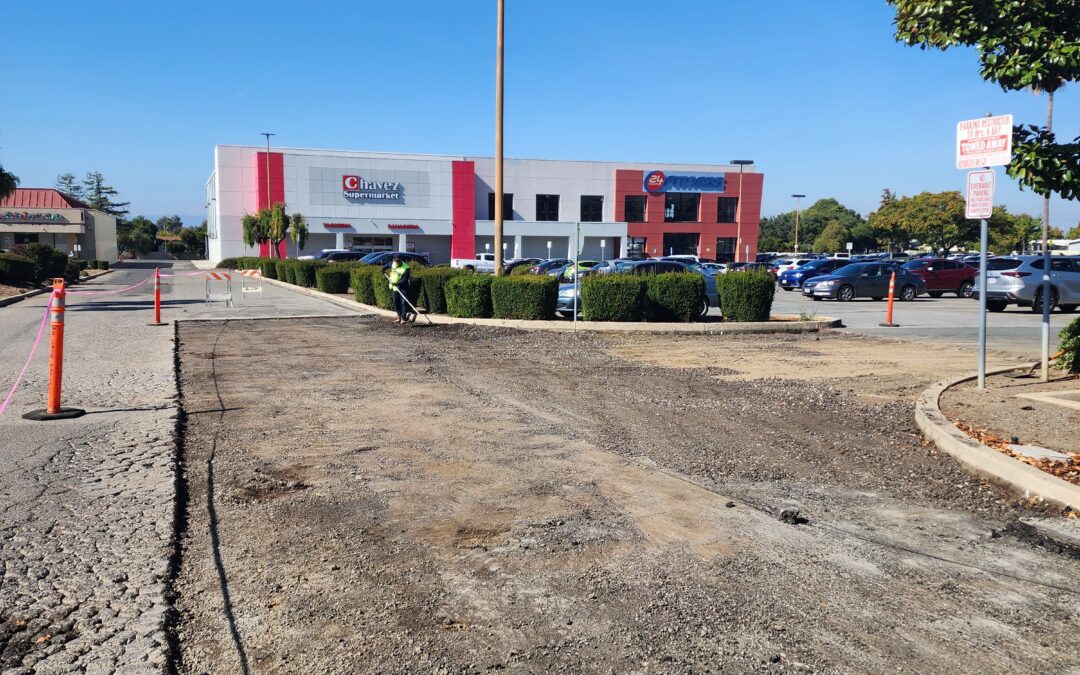Asphalt is a widely used material for driveways, parking lots, and roadways due to its durability and cost-effectiveness. However, in Sacramento, California, many property owners wonder how long it takes for their asphalt surfaces to start showing signs of wear, specifically cracking. This blog article will explore the factors that influence the timeline for asphalt cracking in Sacramento’s unique climate and what steps can be taken to prolong the lifespan of your asphalt surfaces.
The Lifespan of Asphalt
The lifespan of asphalt can vary significantly depending on several factors, including the quality of the installation, the type of use, and the environmental conditions. On average, a well-installed and maintained asphalt surface can last between 15 to 20 years before significant repairs or replacement are needed. However, the onset of cracking can occur much sooner due to various influences.
Factors Influencing Asphalt Cracking in Sacramento
Climate Conditions
Temperature Fluctuations: Sacramento experiences hot, dry summers and cool, wet winters. These temperature extremes can cause the asphalt to expand and contract, leading to stress and eventual cracking. In summer, asphalt can become soft and pliable, while in winter, it can become brittle and more prone to cracking.
UV Radiation: Prolonged exposure to the sun’s UV rays can cause the asphalt binder to break down, leading to oxidation. This process makes the asphalt more brittle and susceptible to cracking.
Water Infiltration
Rain and Moisture: Sacramento’s rainy season can lead to water seeping into small cracks and voids in the asphalt. When temperatures drop, this water can freeze and expand, causing the cracks to widen. Repeated freeze-thaw cycles exacerbate this issue.
Traffic Loads
Heavy Usage: Areas with heavy traffic, such as commercial parking lots or busy roadways, are more prone to cracking due to the constant stress and weight. Residential driveways with regular vehicle use are also affected, though to a lesser extent.
Installation Quality
Proper Preparation: The longevity of asphalt heavily depends on the quality of the installation. Proper subgrade preparation, adequate compaction, and the correct asphalt mix are critical to prevent premature cracking.
Thickness of Asphalt: Thicker asphalt layers can better withstand the stresses of temperature changes and heavy loads, reducing the likelihood of early cracking.
Maintenance Practices
Regular Maintenance: Neglecting routine maintenance can lead to the early onset of cracking. Regularly sealing cracks and applying sealcoat can protect the asphalt from the elements and extend its lifespan.
Typical Timeline for Asphalt Cracking
While the exact timeline for asphalt cracking can vary, here is a general overview of what property owners in Sacramento might expect:
- First Year: If installed correctly, asphalt should remain largely crack-free in the first year. Any cracks that do appear may be due to installation issues or extremely heavy usage.
- 1 to 3 Years: Minor cracking may start to appear, particularly in high-traffic areas or regions with poor drainage. These are usually small surface cracks that can be easily repaired with routine maintenance.
- 3 to 5 Years: More noticeable cracks may develop as the asphalt ages and is exposed to Sacramento’s climate. Regular maintenance becomes increasingly important to address these cracks before they worsen.
- 5 to 10 Years: Without proper maintenance, cracks can become more extensive and severe. At this stage, larger repairs may be necessary to prevent further deterioration.
- 10+ Years: Significant cracking and other forms of damage are common as the asphalt reaches the end of its lifespan. Major repairs or replacement may be required to maintain a safe and functional surface.
Prolonging the Lifespan of Asphalt
To maximize the lifespan of your asphalt surfaces and delay the onset of cracking, consider the following maintenance tips:
- Sealcoating: Applying a sealcoat every few years can protect the asphalt from UV rays, water, and other damaging elements. Sealcoating helps to preserve the flexibility and durability of the asphalt.
- Crack Sealing: Addressing cracks as soon as they appear can prevent water from infiltrating and causing further damage. Use high-quality sealants to ensure effective and long-lasting repairs.
- Proper Drainage: Ensure that your asphalt surfaces are designed with adequate drainage systems to prevent water pooling and infiltration. Effective water management is crucial for maintaining the integrity of the asphalt.
- Regular Inspections: Conduct regular inspections to identify and address any issues early on. This proactive approach can help to catch minor problems before they escalate into major repairs.
- Professional Maintenance: Hire experienced professionals for both installation and maintenance. Quality workmanship and expert care are essential for extending the life of your asphalt.
Conclusion
In Sacramento, California, the time it takes for asphalt to crack can vary based on climate conditions, traffic loads, installation quality, and maintenance practices. While minor cracks may appear within a few years, regular maintenance and proper installation can significantly extend the lifespan of your asphalt surfaces. At We Love Paving, we are dedicated to helping our clients in Sacramento maintain their asphalt to ensure longevity and durability. Whether you need new installation, repairs, or routine maintenance, our team of experts is here to provide top-notch services tailored to your specific needs.

